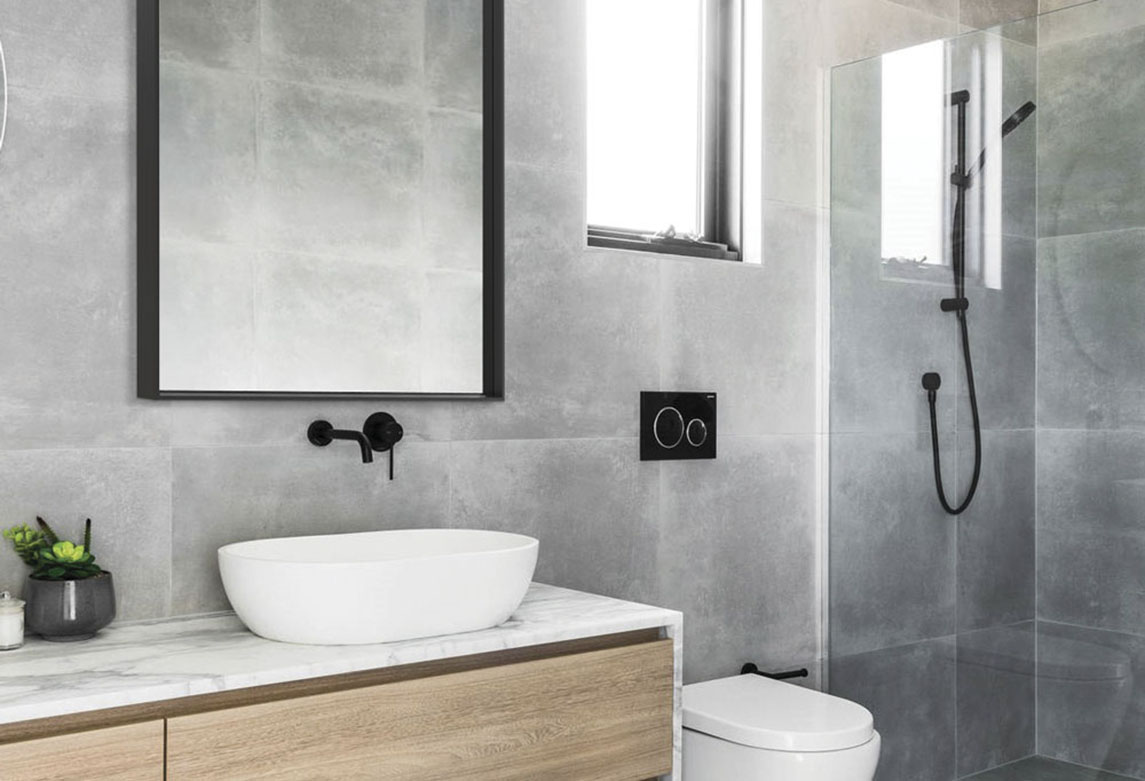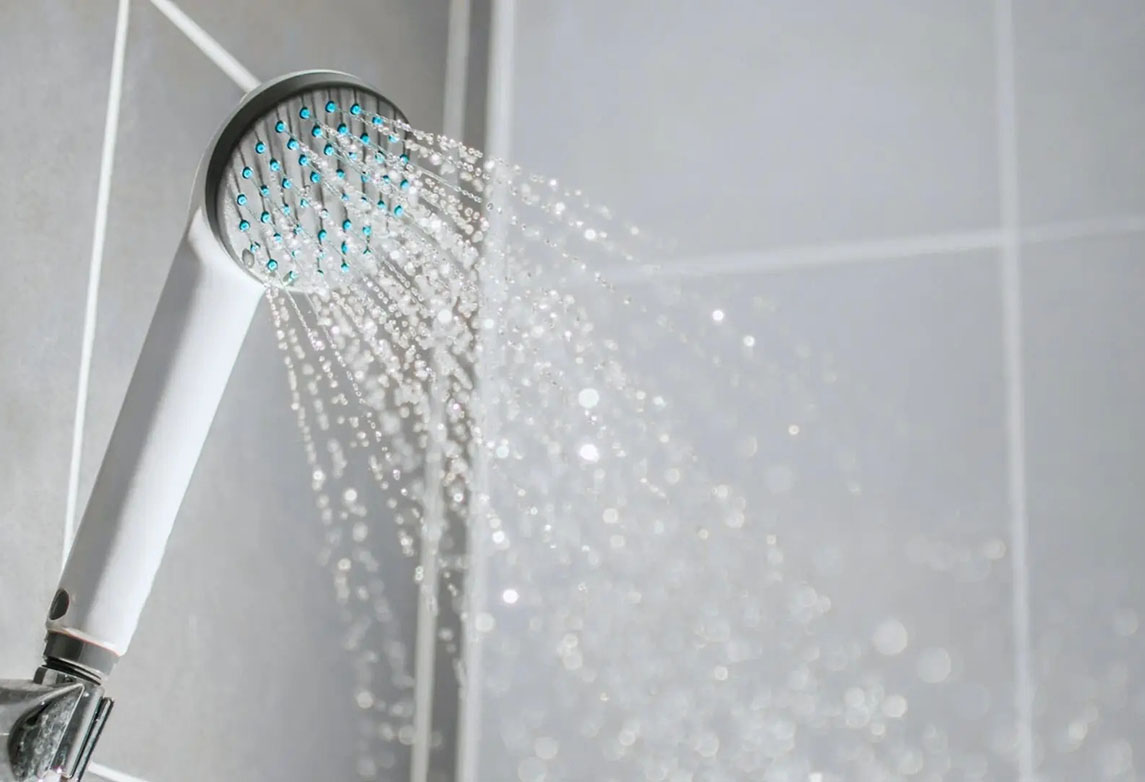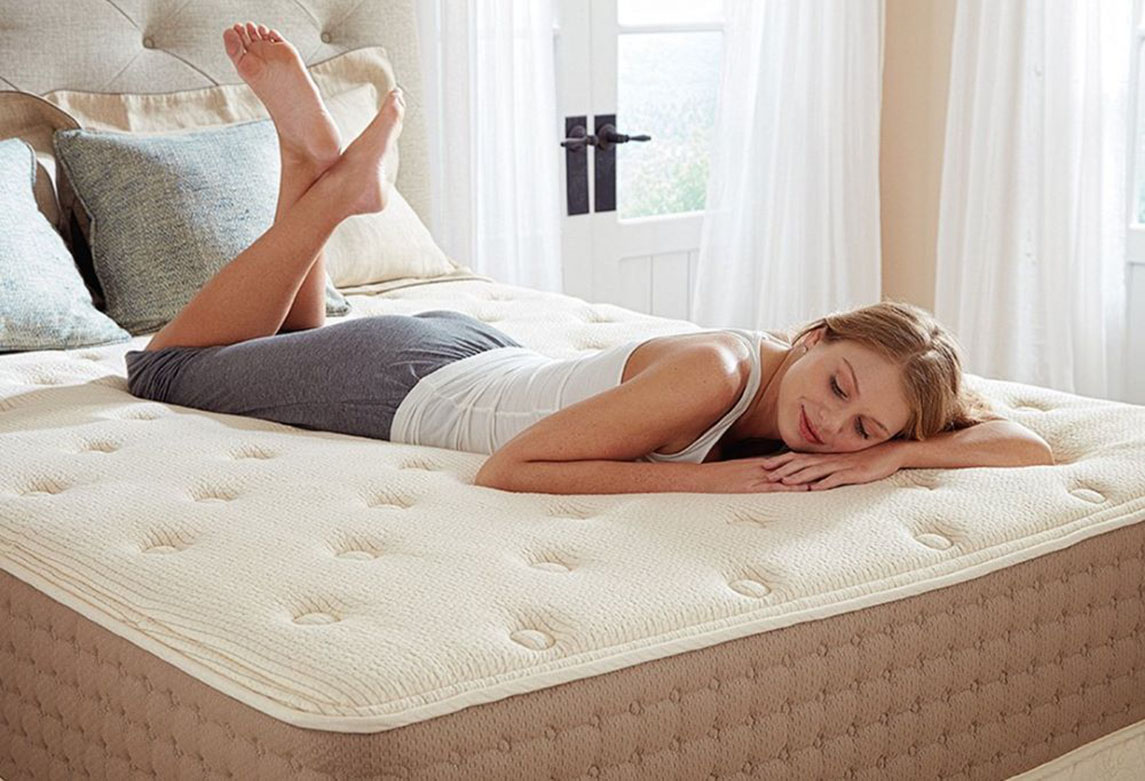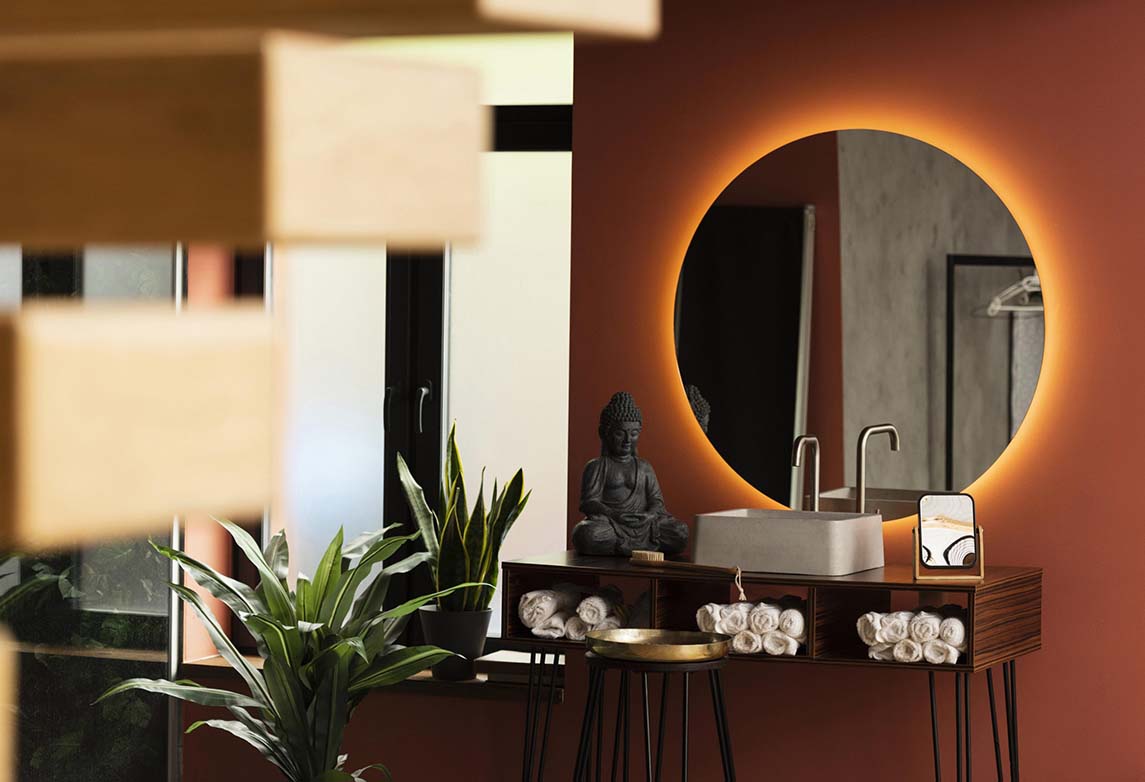A bathroom mirror is not just a functional necessity; it is a vital element of your bathroom’s design and ambiance. The right mirror can enhance the aesthetics of your space, reflect light, and create the illusion of a larger area. With countless options available, choosing the perfect bathroom mirror can be overwhelming. This comprehensive guide will explore the various factors to consider when selecting the ideal bathroom mirror, including size, shape, style, and placement.
The Importance of Bathroom Mirrors
Before diving into the details, let’s consider why bathroom mirrors are essential in any bathroom design.
1. Functionality
At its core, a bathroom mirror serves practical purposes, such as:
- Personal Grooming: Mirrors are essential for daily tasks, such as shaving, applying makeup, or styling hair.
- Light Reflection: Mirrors can reflect natural and artificial light, making your bathroom feel brighter and more open.
- Space Perception: Strategically placed mirrors can create the illusion of a larger space, which is particularly beneficial in smaller bathrooms.
2. Aesthetic Appeal
Mirrors can significantly enhance the overall aesthetic of your bathroom. They can:
- Complement Decor: A well-chosen mirror can tie together various design elements and color schemes.
- Serve as a Focal Point: A decorative mirror can become the centerpiece of your bathroom, drawing the eye and creating visual interest.
- Add Depth: Mirrors can create layers in your bathroom’s design, adding depth and dimension.
Factors to Consider When Choosing a Bathroom Mirror
When selecting a bathroom mirror, several key factors come into play, including size, shape, style, and placement. Let’s explore each of these factors in detail.
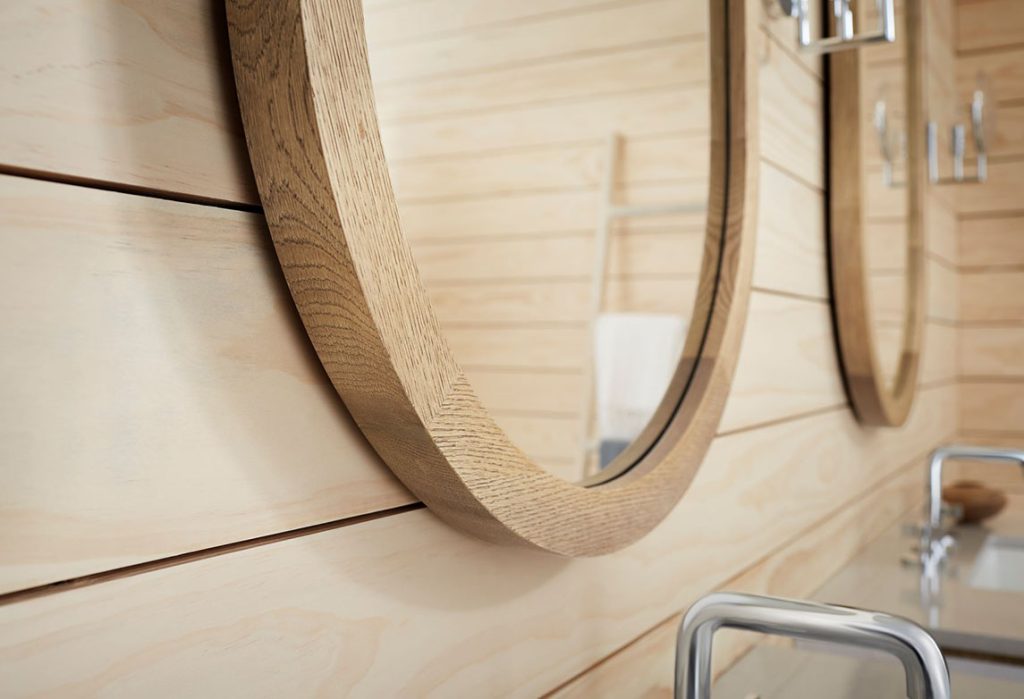
1. Size Matters
The size of your bathroom mirror should complement the dimensions of your bathroom and the existing fixtures.
a. Measuring Your Space
- Height: A good rule of thumb is to position the mirror at eye level for the average user. For adults, this usually means hanging the mirror approximately 5 to 6 feet off the ground.
- Width: The mirror’s width should relate to the sink or vanity size. Ideally, the mirror should be at least as wide as the sink and can even extend to the vanity’s edges for a more seamless look.
b. Proportionality
- Small Bathrooms: In compact spaces, a larger mirror can create the illusion of depth and space, while small mirrors can look disproportionate and underwhelming.
- Large Bathrooms: Conversely, oversized mirrors in large bathrooms may overpower the space. Consider balancing the mirror size with other elements in the room, such as cabinetry or decorative accents.
2. Shape Selection
Mirrors come in various shapes, each offering a different aesthetic and functionality. The shape you choose should complement your bathroom’s overall design.
a. Rectangular Mirrors
- Description: Rectangular mirrors are the most common shape and are available in various sizes and styles.
- Best For: Traditional, modern, and minimalist designs.
- Pros: They provide a classic look and are practical for narrow vanities or sink areas.
b. Round Mirrors
- Description: Round mirrors add a softer touch to your bathroom decor.
- Best For: Modern, eclectic, and farmhouse styles.
- Pros: They can break up angular lines and create a more inviting atmosphere. They are also great for small spaces, as they often take up less visual weight.
c. Square Mirrors
- Description: Square mirrors are similar to rectangular mirrors but with equal dimensions.
- Best For: Contemporary and minimalist styles.
- Pros: They provide a clean, symmetrical look that works well in modern bathrooms.
d. Oval Mirrors
- Description: Oval mirrors combine the benefits of round and rectangular shapes.
- Best For: Vintage, traditional, and transitional designs.
- Pros: They soften hard lines and can create an elegant look in your bathroom.
e. Unique Shapes
- Description: Mirrors can also come in unique shapes like geometric, sunburst, or abstract designs.
- Best For: Eclectic, artistic, and bohemian styles.
- Pros: They serve as statement pieces and can add personality to your bathroom.
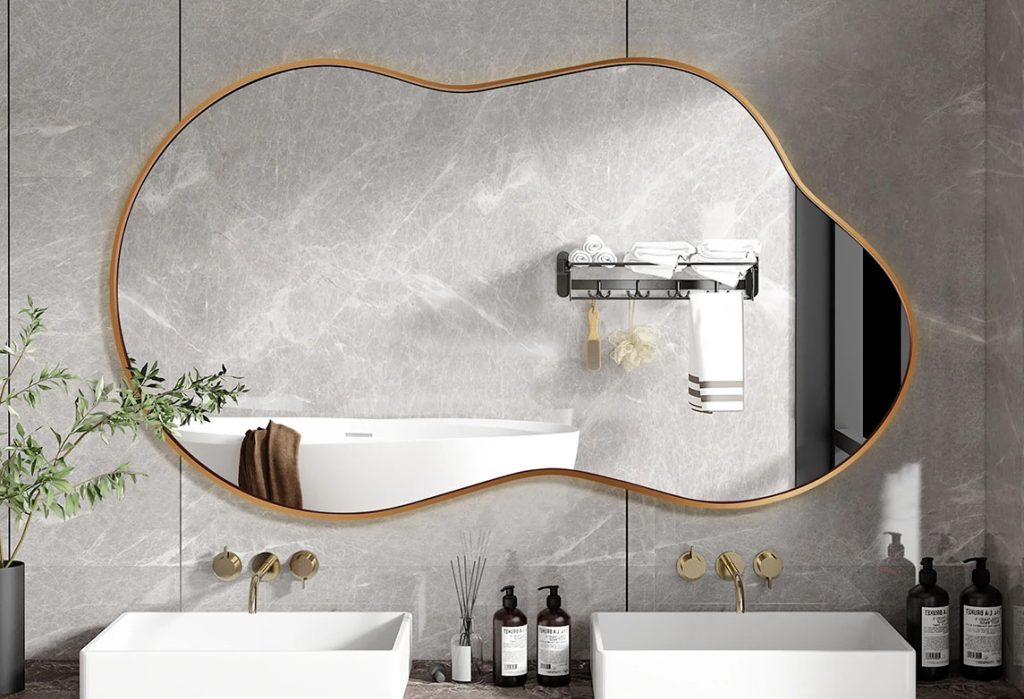
3. Style Considerations
The style of your mirror should align with the overall theme and decor of your bathroom.
a. Framed Mirrors
- Description: Framed mirrors feature a border made from various materials, including wood, metal, or plastic.
- Best For: Traditional, rustic, and contemporary designs.
- Pros: They add character and can enhance the overall aesthetic of your bathroom. A wooden frame can bring warmth, while a metal frame can introduce a sleek, modern feel.
b. Frameless Mirrors
- Description: Frameless mirrors have a minimalist design without a border.
- Best For: Modern and contemporary styles.
- Pros: They create a clean, unobtrusive look that can make a bathroom feel more spacious. They can also blend seamlessly with various decor styles.
c. Backlit Mirrors
- Description: Backlit mirrors have integrated lighting behind the glass.
- Best For: Modern and high-tech designs.
- Pros: They provide soft illumination, making them ideal for tasks like applying makeup or shaving. Backlit mirrors also create a stunning visual effect, enhancing the ambiance of your bathroom.
d. Magnifying Mirrors
- Description: Magnifying mirrors are typically smaller and feature a double-sided design, with one side offering magnification.
- Best For: Makeup application, grooming, and detailed tasks.
- Pros: They allow for close-up views, making them practical for precise tasks. They can be mounted on the wall or attached to a vanity.
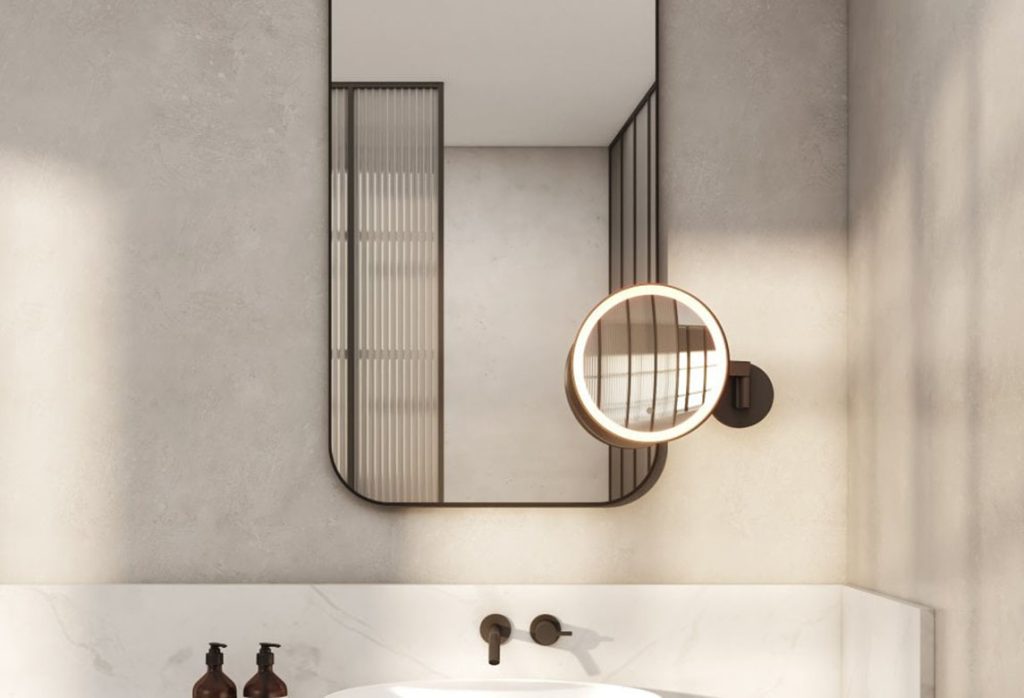
4. Placement and Positioning
The placement of your bathroom mirror is just as important as its size and style. The right positioning can enhance functionality and aesthetics.
a. Above the Vanity
- Description: The most common placement for bathroom mirrors is above the vanity or sink area.
- Considerations: Ensure the mirror is centered over the sink for a balanced look. Depending on the height of the vanity, adjust the mirror’s height accordingly for easy use.
b. Over the Bathtub
- Description: Placing a mirror above a bathtub can create a luxurious, spa-like feel.
- Considerations: Ensure it is securely mounted and positioned at a height that won’t be affected by water splashes.
c. Opposite Windows
- Description: If you have windows in your bathroom, placing a mirror directly across can reflect natural light and brighten the space.
- Considerations: This placement can create a vibrant atmosphere while enhancing the overall light in the room.
d. Lighting Considerations
- Description: Good lighting is crucial for effective mirror use, particularly for grooming tasks.
- Considerations: Install wall sconces or overhead lighting around the mirror for even illumination. Ensure the lights are positioned to avoid harsh shadows on your face.
Tips for Choosing the Perfect Bathroom Mirror
With all these factors in mind, here are some practical tips to help you choose the perfect bathroom mirror:
1. Consider Your Needs
Reflect on your daily activities and how you use your bathroom. Do you require a large mirror for makeup application, or is a simple mirror sufficient for basic grooming tasks? Understanding your needs will guide your selection.
2. Evaluate Your Bathroom Size
The size and layout of your bathroom will significantly influence your choice. Ensure that the mirror complements the available space without overwhelming it. In small bathrooms, opt for a larger mirror to create a sense of openness, while larger bathrooms may benefit from more unique or bold designs.
3. Match the Overall Aesthetic
Ensure your mirror aligns with the overall design theme of your bathroom. Consider the color scheme, materials, and finishes used in your fixtures and decor. A cohesive look will create a harmonious and visually appealing environment.
4. Think About Maintenance
Certain materials and finishes may require more maintenance than others. For example, mirrors with wooden frames may need regular polishing, while frameless mirrors are easier to clean. Consider how much time you are willing to dedicate to upkeep.
5. Explore Adjustable Options
For added functionality, consider mirrors with adjustable features, such as tilting or rotating capabilities. This can enhance usability for different users or tasks, particularly in shared bathrooms.
6. Set a Budget
Bathroom mirrors come in a wide range of prices. Set a budget before shopping and explore options within that range. Remember that a quality mirror is an investment that can enhance your bathroom’s functionality and aesthetics for years to come.
Choosing the right bathroom mirror involves careful consideration of size, shape, style, and placement. A well-chosen mirror can elevate your bathroom experience by enhancing functionality, reflecting light, and contributing to the overall aesthetic. Whether you opt for a classic framed mirror, a modern frameless design, or a unique statement piece, investing time in selecting the perfect mirror will result in a more enjoyable and inviting bathroom environment.
